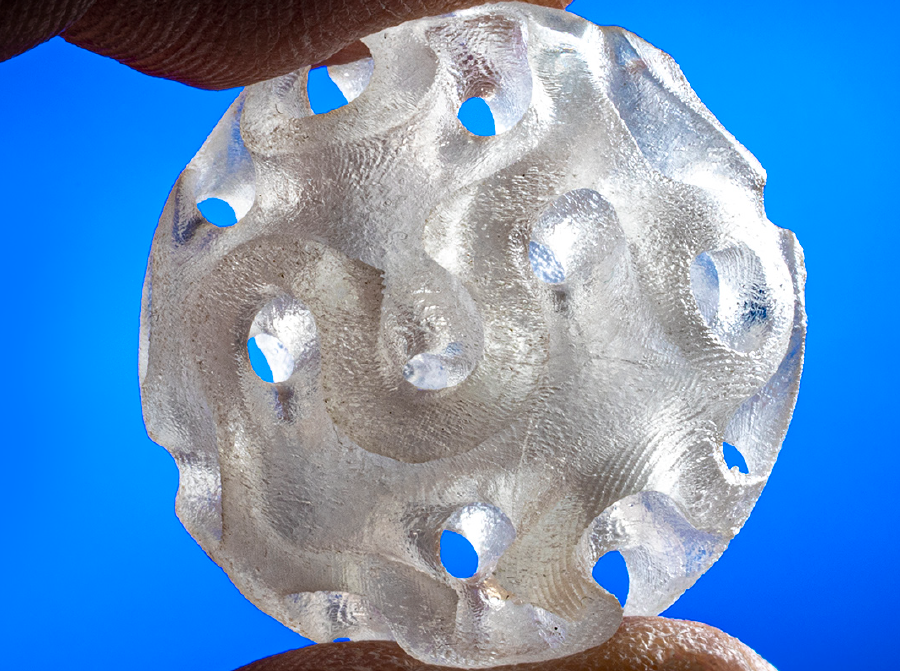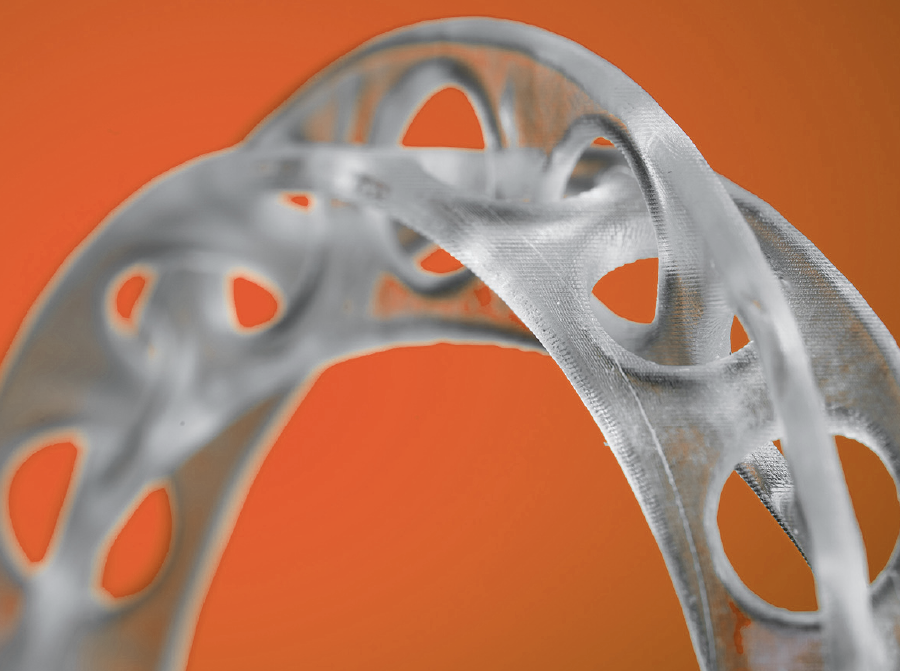Inkjet technology developer Xaar has published a white paper that demonstrates how its Ultra High Viscosity Technology can be used to “print without limits and drive creativity” in 3D and additive manufacturing applications.
Through in-house analysis, Xaar has highlighted how the ability of its printheads to deposit fluids with viscosities of around 100 centipoises (cP) at jetting temperature (or 1000cP at ambient temperature), allows them to overcome the traditional drawbacks of inkjet technologies. In fact, thanks to the improved level of precision these printheads are able to achieve, the firm says that Ultra High Viscosity is now taking the inkjet 3D printing or coating of parts to a ‘whole new level.’
“Ultra High Viscosity Technology offers a wide range of new 3D and AM possibilities which are really as wide as the customer can think of,” said Mike Seal, Xaar’s Head of Advanced Applications, Technologies and Fluids. “We’re giving people a new tool to create better products, and with Ultra High Viscosity, transforming traditional and 3D printing by enabling extra material properties that aren’t possible with other inkjet printheads.”

Xaar’s growing AM inkjet offering
Founded in Cambridge, UK, Xaar is a leading manufacturer of advanced inkjet printheads that are designed to consistently jet precise volumes of fluids with a pinpoint level of accuracy. As the firm has iteratively developed its technologies, it has gradually built up a portfolio with sufficient efficiency and tailorability benefits that packaging, labelling, ceramic, glass decoration and increasingly, 3D and additive manufacturing clients, have begun to adopt them within varying end-use applications.
The company’s recently-released ‘Xaar Irix’ printhead, for example, is capable of printing 3D fluids and inks, whether they be solvent-based or those needed for industrial use-cases, while its Xaar 1003 printhead is now being shipped within dp polar’s AMpolar i1 3D printer, a system that’s specifically built to enable the mass-production of parts.
With technology enabled through its ImagineX platform, Xaar’s latest printheads have also shown significant potential within 3D printing, thus to delve deeper into why this might be, and identify further applications for the technology, Seal has teamed up with the firm’s Principal Engineer of Advanced Applications Nick Jackson, to pen a paper they’ve now published online.

Inkjet’s viscosity conundrum
According to the Xaar duo, inkjet printing’s speed, resolution and reliability has made it “a key enabler for many innovators,” but the technology also has its limits. One such drawback relates to the ‘low viscosity’ of inkjet’s compatible fluids, as their high flowability makes them hard to print, and often causes them to be overlooked in favour of other technologies when it comes to experimental production applications.
Most industrial inkjet printing applications, meanwhile, have typically had a recommended nominal jetting viscosity of up to 10-12cP, a parameter affected by aspects such as a printhead’s architecture, flow rate, temperature and fluid handling capabilities. The development of Xaar’s TF Technology helped enable the transition of inkjet into the industrial ceramics market, where fluids loaded with more particles have pushed the base viscosity higher.
However, the firm says that it’s only with the further development of a new technology and its latest printheads, that the stabilization of increased particle concentrations and densities, as well as the ability to explore higher viscosities in applications such as 3D photopolymer jetting, have now become viable.

Applying Ultra High Viscosity AM
Launched in 2007 with the ‘Xaar 1001,’ TF Technology describes the open sub-manifold structure of the firm’s printheads, which are designed to reduce flow resistance and enable the jetting of highly-pigmented inks. In practise, TF Technology devices are able to achieve this thanks to their unique fluid paths, which ensure that fluids flow past the back of the nozzle at a very high rate, and continuously recirculate to help avoid any blockages.
Since the introduction of TF Technology, Xaar has continued to build on this approach, developing a new print mode known as ‘High Laydown Technology.’ Compatible with the company’s existing printhead portfolio, the process enables larger drops of material to be deposited at a throughput of up to 165 ml/min, thus it’s increasingly allowing users to address productivity-intensive applications.
Hot on the heels of its TF and High Laydown technologies, the firm has also developed Ultra High Viscosity, a capability which allows for the printing of high molecular weight polymers and fluids with high pigment densities and concentrations, which can be used to 3D print parts with functional benefits, such as being more robust, resilient and flexible.
Jetting higher viscosity fluids delivers improved edge definition on non-porous substrates as well, due to reduced drop spread (known as dot gain in analogue printing) before the print is fixed, and enables new types of materials to be inkjet printed, including adhesives, paints and photoresists, which open the technology to new biomedical, automotive, circuitry, electronics and braille-printing applications.
Thanks to their enhanced material compatibility, Jackson and Seal concluded their paper by saying that Xaar’s printheads and Ultra High Viscosity Technology essentially open new applications for inkjet. The duo add that, at present, the firm’s Advanced Applications Team is working with customers to explore new applications and technologies, while their five-step process helps manufacturers evaluate fluids for use in new product development and advanced manufacturing.
For its part, Xaar says that it is “continuing to work with a number of fluid partners” to further establish the viscosity capabilities of its printheads, and it has already identified the potential of its products in “helping manufacturers transition to inkjet,” and to efficiently produce everything from customized small part batches to mass produced-components.
“With inkjet technology, the only difference between your final prototype and your product, is just the number you produce,” added Seal. “From enabling 3D printing on a truly industrial scale, to the mass-customization of 3D printed parts, we are excited to show customers how Xaar’s UHV Technology can take them from an initial conversation through to full commercialization.”
Those interested in reading Xaar’s ‘Pushing the boundaries of inkjet technology with high viscosity printing’ report in full can do so here.
To stay up to date with the latest 3D printing news, don’t forget to subscribe to the 3D Printing Industry newsletter or follow us on Twitter or liking our page on Facebook.
For a deeper dive into additive manufacturing, you can now subscribe to our Youtube channel, featuring discussion, debriefs, and shots of 3D printing in-action.
Are you looking for a job in the additive manufacturing industry? Visit 3D Printing Jobs for a selection of roles in the industry.
Featured image shows a Xaar Ultra High Viscosity 3D print. Image via Xaar.


